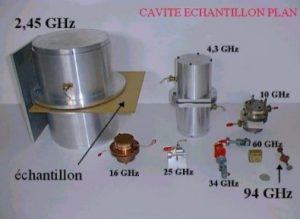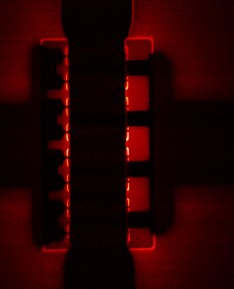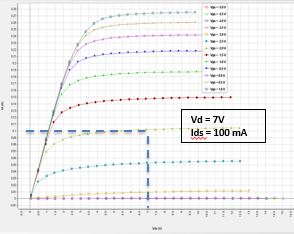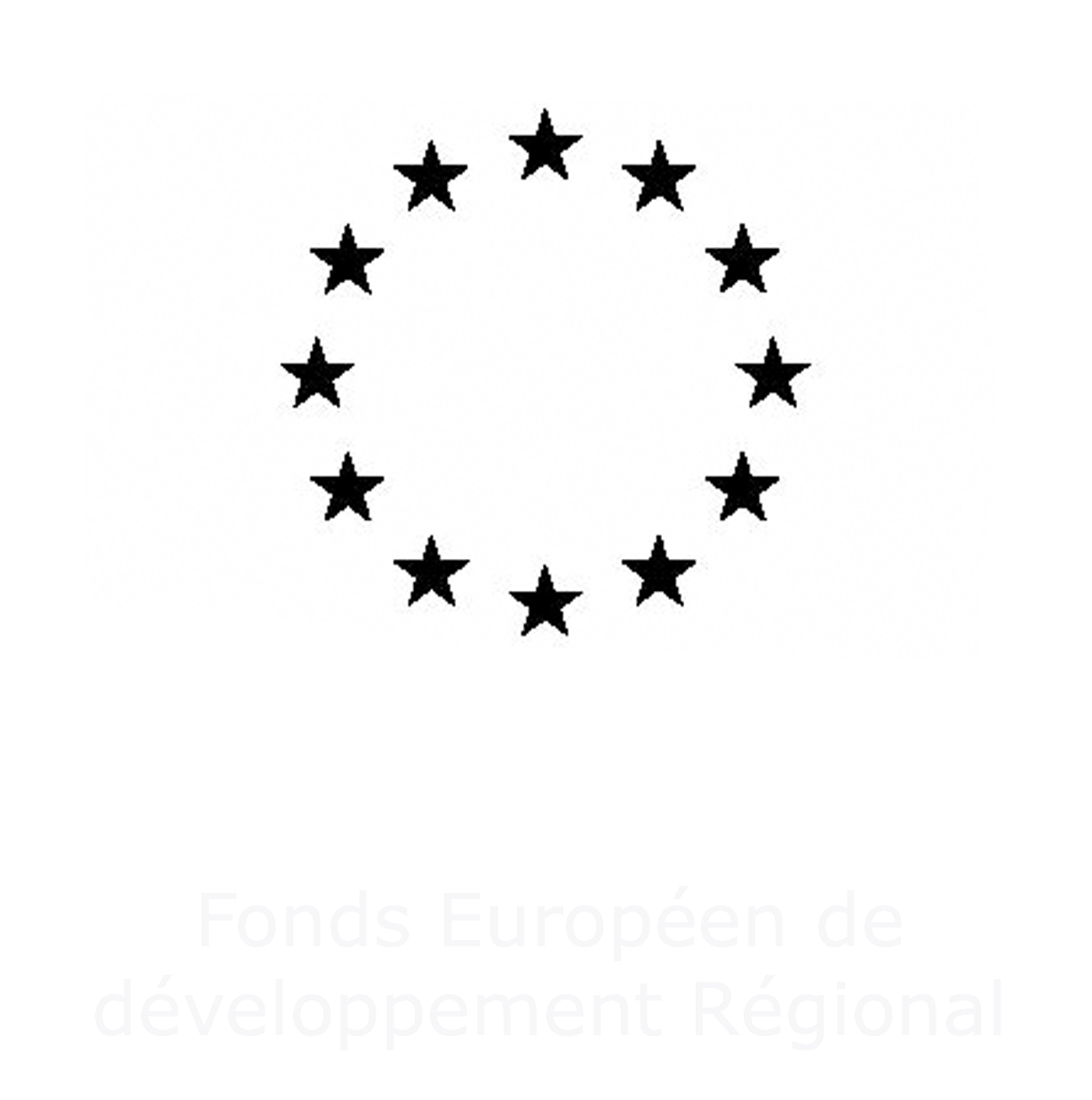Circuitos electrónicos e instrumentacion (en Inglés)
The Instrumentation Circuits domain is a technical platform that brings together a set of advanced microwave measurement equipment ranging from microwave sources to associated characterization tools.
In fact, this field has equipment and benches of microwave and sub-millimeter devices allowing the characterization of components, circuits and materials in linear and non-linear regimes.

These benches make it possible to measure in S parameters not only passive devices (microwave filters, MEMS RF, etc.) but also active devices (transistors, LNA, amplifiers, etc.).
It is possible to measure devices in coaxial, waveguide or on-wafer with RF probes depending on the frequency bands and device specificities.

S parameters measurement benches 75 GHz -110 GHz |
On wafer filter meausrement
|
This bench of measurement allows to characterize both the S parameters and the Noise Figure in the 10 MHz – 50 GHz band, for example to characterize devices of type Low Noise Amplifier adapted 50 ohms.

Noise Figure measurement bench (NF 50 ohms + S parameter) 10 MHz – 50 GHz |
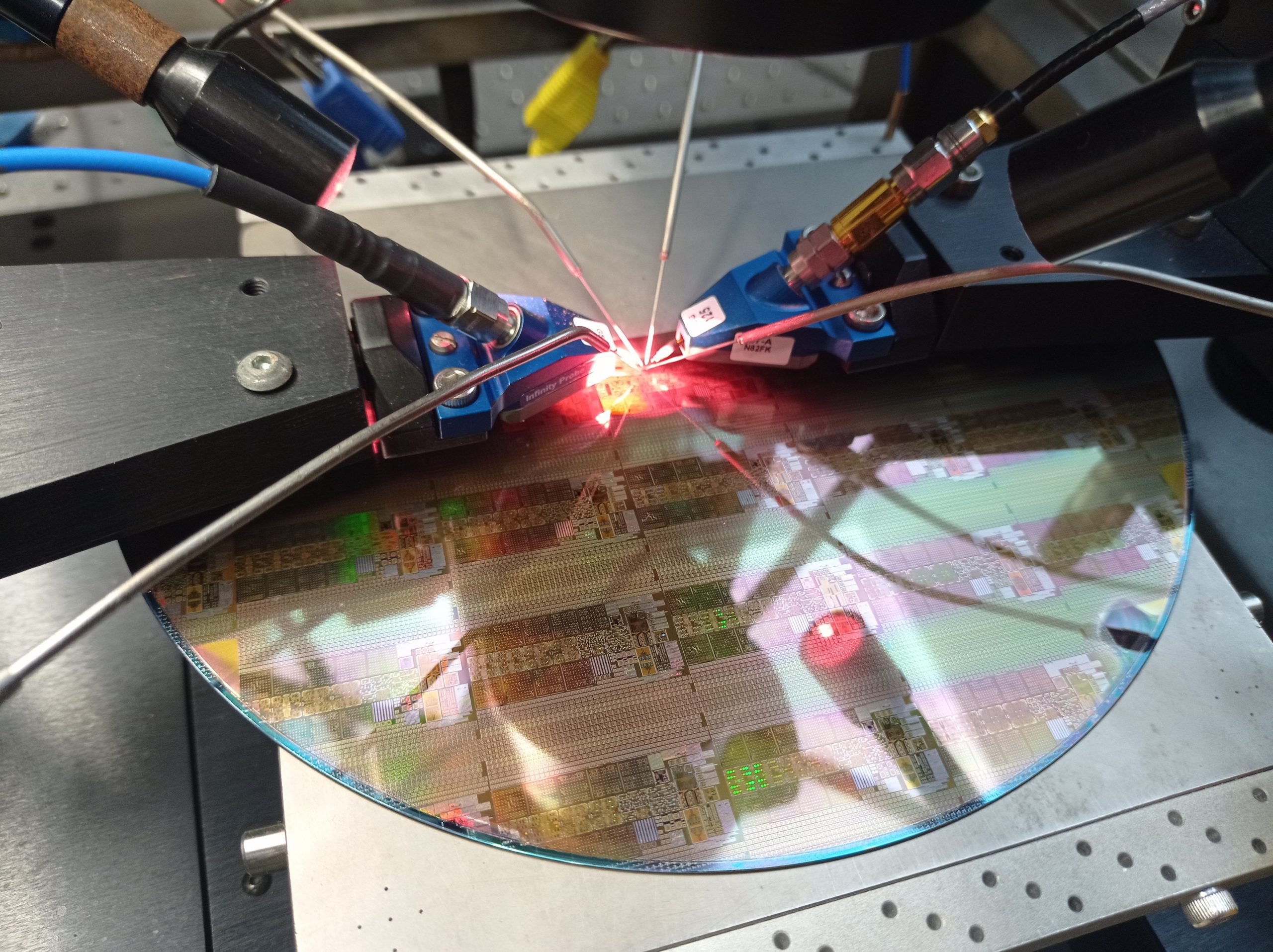
On wafer Noise Figure measurement of an LNA
|
These benches of measurement allow to characterize active devices in power:
– frequency measurements, with maximum CW Load-Pull capacities of 50 W between 1 GHz and 18 GHz, 20 Watts between 18 GHz and 26 GHz, then 10 Watts between 26 and 40 GHz,
– frequency / time measurements, in modulated signal power (EVM, ACPR, NPR) between 1 GHz and 50 GHz.
These benches are used to characterize materials from a few hundred MHz to 330 GHz and to obtain the dielectric permittivity ɛ and tangent dielectric losses tgδ.
Various characterization techniques are available:
– Characterization of massive dielectric materials or in thin film layers:
Tried for several years, the cavity method allows to characterize in a very wide domain of frequencies, dielectric materials at room temperature or in temperature. Thanks to a set of varied size cavities, materials characterization can be made in relevant frequencies of telecommunications sector from 2GHz until 90GHz.
– Characterization of dielectric resonators by the cylindrical cavities’ method:
Other methods of characterization known as “resonant” are available such as, the dielectric resonator method, the open-cavity method, the dual dielectic resonator method, etc., to characterize materials with low and very low dielectric losses (tgδ~10-4 to 10-5), materials with very high permittivities (ɛ>30) and materials in thin films (e~qlq100nm).
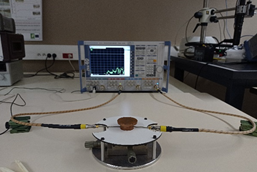
Dielectrical Resonator material characterization bench
|
Methods known as «reflection/transmission» have also been developed for the characterisation of dielectric loss materials in a very wide frequency range such as the radiating or loaded coaxial guide methods and the rectangular or circular guide methods.
This bench makes it possible to make thermoreflectance measurements on devices such as transistors for example.
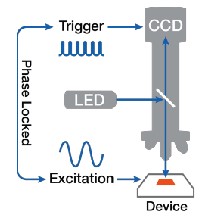 |
– The reflectivity of a material changes with temperature. – The coefficient of thermo-reflectance Cth represents the slope of the line ΔR as a function of ΔT. |
MICROSANJ : NT 220C special
– Camera 4MP
– 4 sources 365nm, 470nm, 530nm, 780nm
– spatial resolution 0.29um
– temporal resolution 50ns
– temperature resolution (Au : 0.5°C (5min))
Thermalization ∼16L^2/ π^2D
Width = 100µs, Period = 1ms, Pdiss = 0,7 W, 𝑅𝑇𝐻=𝛥𝑇/𝑃𝑑𝑖𝑠𝑠
-> 𝑅𝑇𝐻 = 31,43 °C/W
– S Parameters measurement 10 MHz -24 GHz
– S Parameters measurement 10 MHz -67 GHz
– S mm Parameters measurement 75 GHz – 330 GHz
– Noise Figure measurement (NF 50 ohms + S parameters) 10 MHz – 50 GHz
– Frequency/time measurements CW Load-Pull power 1 GHz – 40 GHz
– Frequency/time measurements modulated power signals ( EVM, ACPR, NPR) 1 GHz – 50 GHz
– Characterization of materials up to 67 GHz
– Materials’ characterization 67-330GHz
– Production of Wire Bonding
– Linear Distortion measurements
– InterModulation measurements
– Thermoreflectance measurements
– Pulse IV measurements
– IDLTS measurements
– Linearity measurements with multi-tone signal 27 GHz – 31 GHz


